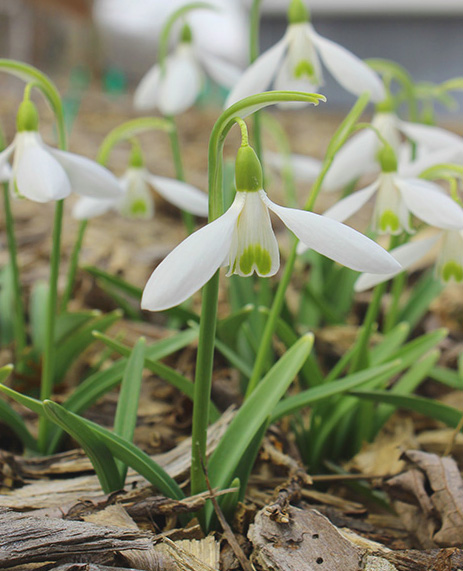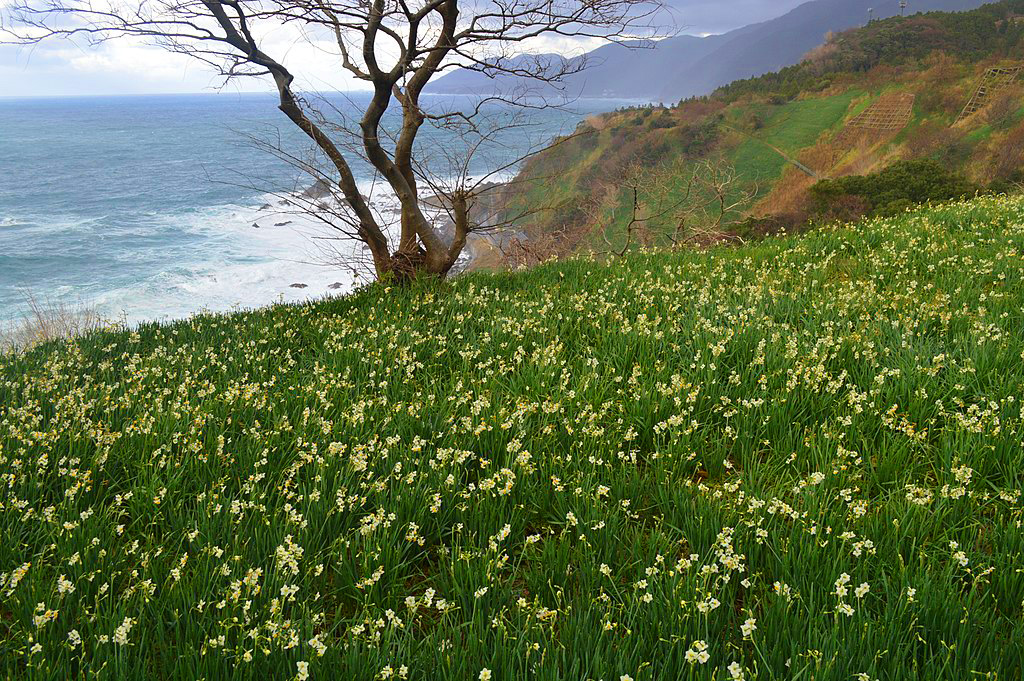To read more by topic or date, see our Newsletter Archives page.
October 22, 2023
“October is the month when the bulbs – “Children of Spring” – must be put to sleep so that they may awake early and tell the peoples of the earth that spring has arrived.”
– Mary Fanton Roberts, 1864-1956, American journalist and writer, 1917 essay (longer excerpt below).
(Almost) Your Last Chance to Order Bulbs to Plant This Fall!
Great news: we’re expecting to have shipped all current orders by Thursday 10/26 (unless a later date was requested), at which point we’ll take a day to inventory our remaining stock and then resume sales for perhaps another week. But there’s no need to wait till then to save on some of our favorites: to encourage you to order now so that our counting day go is shorter, we’re offering 10-30% off on 15 splendid tulips, 35 animal-resistant daffodils, 8 crocus (including rare ‘Cloth of Gold’), 3 fragrant hyacinths, 5 stately lilies, 2 long-lived peonies, and 22 other diverse treasures which you can see listed at our Bulbs on Sale page.
Since the bulbs are going fast, please let us know if - should we run out of one of your choices - you’d like us to substitute something else, give you a credit, or simply refund to your credit card.
Snowdrops at Warp Speed

|
“Well, here’s a cool thing,” our good customer Nancy McDonald emailed us one March several years ago. Nancy gardens in zone-5a Grand Marais, Michigan, a mile from Lake Superior, where the annual snowfall averages over 11 feet (yes, 11 feet!). “Three days ago my snowdrops were covered with more than a foot of snow. Two days ago the snow melted. Yesterday they had little green and white spears sticking up. Today the stems are long enough that the buds are starting to hang over. If it’s warm enough tomorrow, I bet some of them will open. That’s zero to sixty in only three days. Incredible!”
Want to see if you can beat that record? Order yours now, plant them in the next two weeks, wait with anticipation, and don’t forget to check on them early next spring!
Daffodils Gone Wild: Tazettas in Japan

|
With their clusters of small, fragrant flowers, the group of daffodils known as tazettas have been popular for hundreds if not thousands of years. In Japan they long ago escaped gardens to make themselves at home in the wild, as described at botanyboy.org:
“Narcissus tazetta . . . can be found in various stages of bloom anytime from late December through February along the roadsides and fields of southern Japan. . . . N. tazetta is a close relative to the most famous member of the [tazetta] group, Narcissus papyraceus, the common paperwhite. . . .
“It is the corona that gives this plant the species epithet, tazetta, from the Italian word tazza, which is a shallow wine cup on a pedestal-like base. . . . Their odor is intense, but not unpleasant, and much more floral scented than the musty smell of N. papyraceus. . . .
“In Japan, N. tazetta can be found in the warmer regions of Honshu, Kyushu, and Shikoku, but is not native. It is thought that it came from China centuries ago . . . but very likely was brought to that country in the distant past from the Near East along trading routes. In Japan it is found on roadsides, on rice paddy embankments, along rivers, and in vacant lots in both agricultural and urban environments. A number of different flower forms and hybrids are frequent garden plants in Japan and elsewhere [including ‘Early Pearl’, ‘Erlicheer’, ‘Geranium’, ‘Grand Primo’].
In Japanese the tazettas are called “suisen, meaning ‘water wizard.’ . . . This is a derivative of the Mandarin name, shui xian hua, meaning ‘water goddess flower.’”
Most of these “water wizards” are easy to force on pebbles and water, and they’re great in gardens from zones 6-8(10WC). Why not order a few to try for yourself?
1917: “Good Gardeners are Always Young in Spirit”

|
This rapturous essay about bulbs was written in 1917 by Mary Fanton Roberts, founder of The Touchstone magazine and former editor of Gustav Stickley’s influential The Craftsman. Although by modern standards her writing may seem overwrought, we think you’ll find a lot of truth in it:
“When October, trailing her radiant robes of purple and gold, visits the earth, all good gardeners know that the climax of their gardens’ beauty has been reached and that they must begin at once the joyous task of preparing for next year’s procession of flowers. . . .
“This is indeed a happy month for people with creative imagination, for through the mystic October haze, they see faintly, as in a vision, the tender colors of their spring garden. It is natural for gardeners to believe in immortality, for in the midst of flower death they see life patiently brooding. Good gardeners also are always young in spirit, for their minds are fixed on spring when others feel only the bitter sting of winter.
“October is the month when the bulbs – “Children of Spring” – must be put to sleep so that they may awake early and tell the peoples of the earth that spring has arrived. ‘Ere man is aware that the spring is here, the flowers have found it out,’ is an old Chinese saying that holds a truth. We have little faith in a calendar prophesy but we believe the report of the gladsome crocus and the pale, wan snowdrop. The lovely azure glory-of-the-snow bids us look up to the blue skies of spring, and the joyful blaze of tulips warms our hearts torpid from winter’s cold into new faith. It seems to garden lovers that there is magic power in the breath of the first bulbs that drives away icy winter – something like the power in the cross that deprives the Prince of Evil of his strength.
“The butterfly winging its rapturous way from its dull grub state is no more marvelous a transfiguration than a daffodil’s unfurling from its dull bulb prison. The flight of the blue bird across a garden is a wonderful thing; so also is the rush of blue scillas along the garden path. Swallows come not more swiftly than the crocus, and the star of Bethlehem leads the way to new hope. The pure white fritillaria is like a sweet memory of snow, while the beautiful muscari dots the grass, a forerunner of summer skies.”
Share Our Gazette with a Friend
Please help us “Save the Bulbs!” by forwarding our newsletter to a kindred spirit, garden, museum, or group.
To Reprint Any Part of Our Gazette . . .
Simply credit www.oldhousegardens.com.











